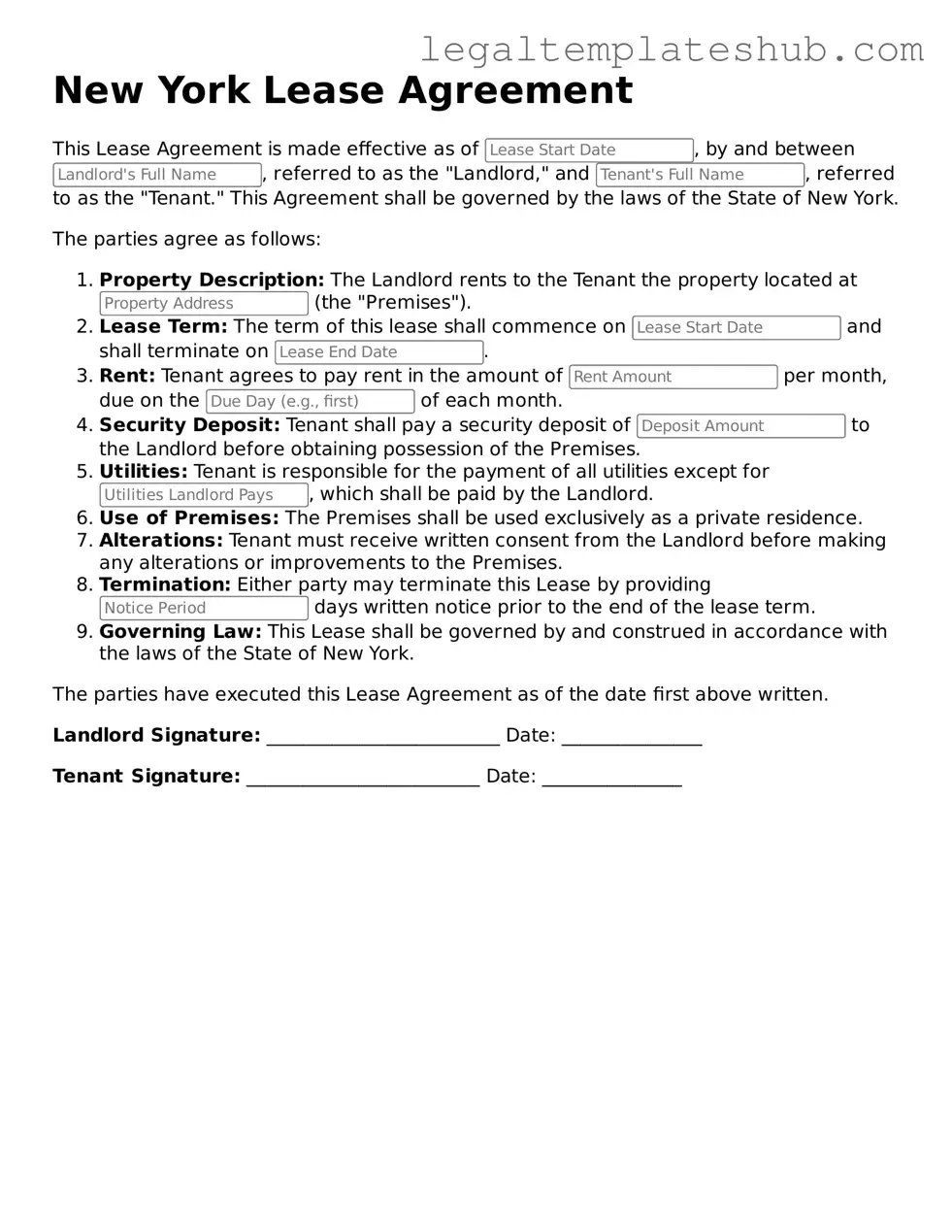Printable Lease Agreement Document for New York
A New York Lease Agreement is a legally binding document that outlines the terms and conditions between a landlord and a tenant for renting a residential or commercial property in New York. This form serves to protect the rights of both parties and ensures clarity regarding payment, duration of the lease, and responsibilities. Understanding this agreement is essential for anyone entering into a rental arrangement in the state.
To begin the process, fill out the form by clicking the button below.
Access Editor
